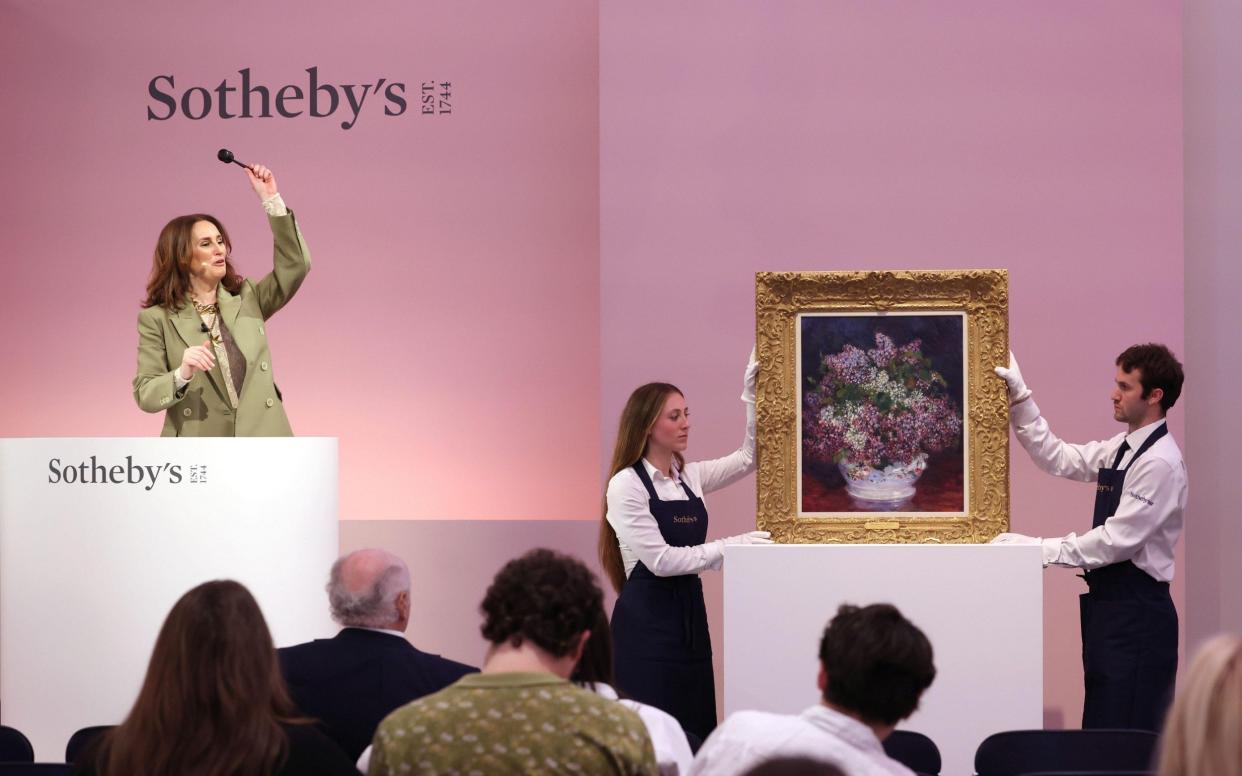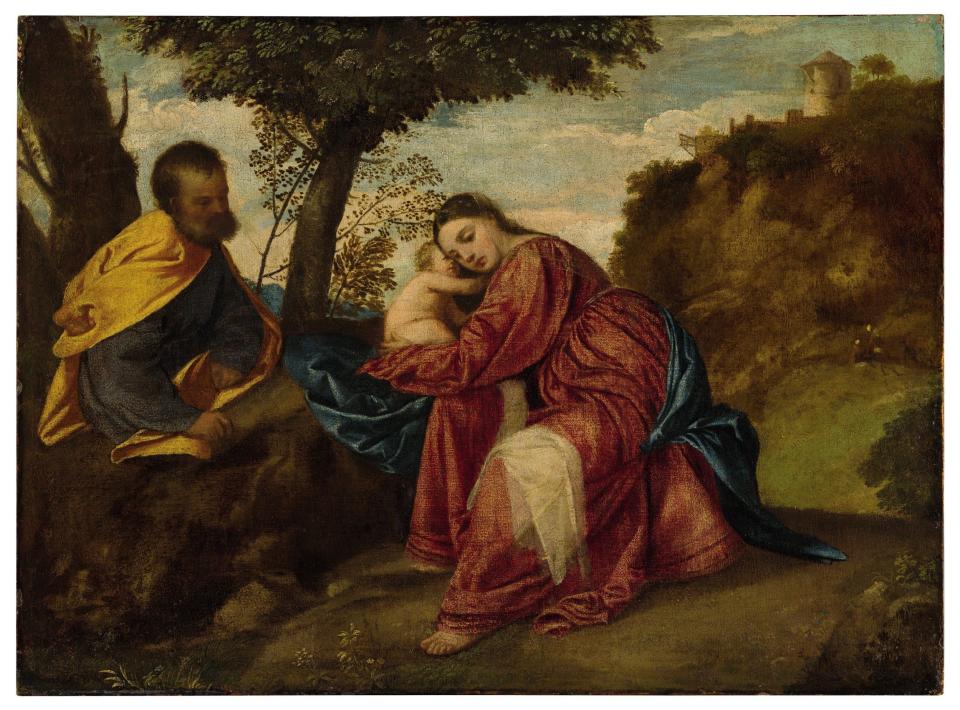Is it all over for the London summer auction?

The London art market’s summer season has always been a money-spinner. Against a backdrop of high-profile social, sporting and cultural events, including Royal Ascot and Glyndebourne, the art world pools its resources to attract global wealth to the second-largest art market in the world.
This year, more than 50 galleries are involved in special exhibitions under the marketing umbrella of London Art Week. Art dealer Karen Taylor, a former Sotheby’s expert in historic British watercolours, has organised twin exhibitions at Gallery Eight, in Duke Street, St James’s, for British women artists, and the evocative landscapes that the poet and artist Edward Lear painted on his travels around Greece and Italy. Taylor says London is a magnet for international collectors and museum curators at this time of year. Her list of visitors includes curators from American museums in New York, Ohio, Chicago, Los Angeles, Houston and Washington.
There are two relatively new summer art fairs – the Eye of the Collector, staged in a converted chapel in the middle of Chelsea Barracks, and The Treasure House Fair, seeking to build on its promising start last year, in the grounds of the Royal Hospital Chelsea.
The biggest money-spinners, however, have been the auctions. London’s summer sales of Impressionist, modern and contemporary art peaked in June 2015 at £600 million. But for several reasons, despite the global market remaining steady, these sales totals have been dwindling. In June 2019 they slid to £353 million and last week to just £130 million.
Some blame the world economy, war, the Covid-19 pandemic and Brexit red tape. Others would add the rival appeal of New York, Hong Kong and Paris as places to sell. The timing of Britain’s general election cannot have helped. But the real problem is the shortage of supply of valuable works in the London market. London stages three high-profile seasonal auctions a year (in March, June and October), while New York has only two. So, when supply runs short, one of those seasons suffers.
Hugely famous in its day. Missing for centuries. Transformed by conservation: Quentin Metsys's masterpiece, The Madonna of the Cherries. Find out more about the masterwork here: https://t.co/LZ2Cqf8VNT pic.twitter.com/mggJMaLzAC
— Christie's (@ChristiesInc) June 17, 2024
This is a particular problem in June because the rival May sales in New York (regularly making more than £1 billion) leave London’s salerooms with only one month to replenish their arsenals. Last year, Phillips reformatted its traditional two-part sales into one. As a result, its summer sales fell from £23.8 million in June 2022 to £13 million last week. Its London sales in March and October, in contrast, make three or four times as much as the June one and have remained steady.
A more extreme example is Christie’s. Having realised £228 million in June 2022, its sales slumped to £85 million in 2023, and then, having cancelled its Part One, higher value evening sale this summer, to just £10.4 million last week.
So, are London’s summer auctions on the way out? The Christie’s sale, it should be explained, may have looked like a disaster, but was part of a larger plan. Without a major collection to build an auction around (Sotheby’s had won the competition for the £17 million Goldenberg collection) and with pressure to support a new venue in Hong Kong, it took the decision to downplay its London summer auctions with lower value contemporary art, enlivened by the Vivienne Westwood fashion collection. That may have attracted visitors, but added only £750,000 to the season’s takings.
A key to Christie’s reasoning is a plan to build up its October sales – expanding the traditional focus on the sort of art that is popular at Frieze Art Fair, with more valuable modern and contemporary art.
But the auction house is non-committal about how it would divide the spoils with its Paris branch, whose October sales will simultaneously seek a supply boost for the international collectors attracted to the French capital by the new Art Basel Paris fair.
Sotheby’s, meanwhile, has remained steadfast in support of the London summer experience. Its Part One sale, the only one still running, realised £83.6 million last week, less than last year but within its predicted range. Ninety per cent of lots, led by a £16 million triptych by Jean-Michel Basquiat, found buyers, and there was strong bidding on paintings by Renoir.
“If anything, the results have reinforced our belief in continuing to hold major sales in London in June,” said Sebastian Fahey, managing director of global fine art at Sotheby’s.
For the time being, then, summer in London belongs to Sotheby’s.
Longleat’s looted treasure is back on sale
Despite talk of a market decline, there is another £100 million worth of art in Old Master sales at Christie’s this week. Prices in the £10 million range are expected for a horse painting by George Stubbs and a rediscovered The Madonna of the Cherries by Flemish artist Quentin Metsys. Even more could be spent on Titian’s The Rest on the Flight into Egypt (c.1510) which should eclipse anything in the Impressionist, modern and contemporary art sales when sold today with an estimate of between £15 million and £25 million.

Once owned by Napoleon, who looted it from a palace in Vienna, it found its way via auction in 1878 to Lord Bath’s collection at Longleat in Wiltshire, from where it was stolen in 1995. Valued then at £5 million, it was recovered in 2002 by the late art detective, Charles Hill, in exchange for an undisclosed ransom. Hill always maintained it had been taken by travellers, and collected it in a plastic bag from a London bus stop. It is now being sold by the 8th Marquess of Bath as part of the Longleat trustees investment strategy.
Cricket fans set to be bowled over in Mayfair

Coinciding with the first Test between England and the West Indies at Lords next week, Mayfair art dealer Chris Beetles opens a summer exhibition of cricketing cartoons by the likes of Larry, Marc and Ronald Searle, together with cricketing landscapes by one of England’s greatest wicket-keepers, Jack Russell, who taught himself to paint during interminably rain-delayed matches.
Beetles has staged several successful exhibitions of his work, the last being in 2018. The work shown this month is priced from £850 to £5,000, while the cartoons range from £200 to £6,500 for The Green Sward by Searle, where a batsman decapitates a wicketkeeper with his backswing.

 Yahoo News
Yahoo News 
